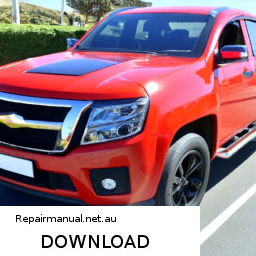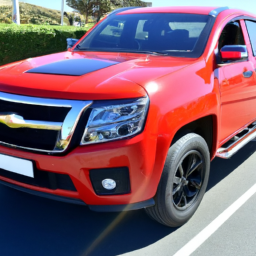
### Reverse Gear Repair on a Holden Rodeo KB TF 140 #### Tools and Equipment Needed: – **Socket Set**: A comprehensive set of sockets (metric) to remove bolts from the transmission and related components. click here for more details on the download manual…..
- CLUTCH PEDAL BITE POINT & FREEPLAY ADJUSTMENT CLUTCH PEDAL BITE POINT & FREEPLAY ADJUSTMENT is a short tutorial on adjusting the clutch bite point in a manual …
- How to Bleed a Clutch in Under 10 Seconds: Quick & Easy Method Explained! Bleeding a clutch in this video has never been easier!! This is the best bleeding video you will see on the internet. Do not watch …
### Reverse Gear Repair on a Holden Rodeo KB TF 140
#### Tools and Equipment Needed:
– **Socket Set**: A comprehensive set of sockets (metric) to remove bolts from the transmission and related components. ensure you have both deep and shallow sockets.
– **Wrenches**: A set of combination wrenches for any stubborn bolts that may not be accessible with a socket.
– **Torque Wrench**: To ensure all bolts are tightened to the manufacturer’s specified torque settings during reassembly.
– **Screwdrivers**: A set of flathead and Phillips screwdrivers for prying and loosening components.
– **Pliers**: Needle-nose and standard pliers for gripping and pulling small parts or clips.
– **Transmission Fluid Pump**: For refilling the transmission fluid after repairs.
– **Gasket Scraper**: A tool to remove old gaskets from the transmission housing without damaging the surfaces.
– **Seal Puller**: To remove old seals without scratching the housing.
– **Impact Wrench**: Optional, but can speed up the removal of stubborn bolts.
– **Work Light**: Good lighting will help you see clearly inside the transmission and under the vehicle.
– **Parts Cleaner**: To clean components before reassembly, ensuring all debris is removed.
– **Replacement Parts**: New reverse gear, synchronizers, seals, gaskets, and any other worn components.
– **Service Manual**: A repair manual specific to the Holden Rodeo KB TF 140 for torque specifications and detailed diagrams.
#### Steps to Repair Reverse Gear:
– **Preparation**:
– Park the vehicle on a flat surface and engage the handbrake.
– Disconnect the battery to avoid any electrical issues during the repair.
– **Transmission Removal**:
– Lift the vehicle safely using a hydraulic jack and secure it with jack stands.
– Drain the transmission fluid by removing the drain plug.
– Disconnect the driveshaft by unbolting it from the differential and sliding it out of the transmission.
– Remove any components obstructing access to the transmission, such as the exhaust system or crossmember.
– Unbolt the transmission from the engine and carefully lower it from the vehicle.
– **Disassembly of Transmission**:
– Place the transmission on a sturdy workbench.
– Remove the external components like the shift lever, speedometer gear, and any sensor.
– Carefully unbolt the transmission case and separate it, being mindful of any internal components.
– Inspect the gears and synchronizers for wear, focusing on the reverse gear.
– **Inspect and Replace Parts**:
– Remove the reverse gear and inspect it for damage or excessive wear.
– Replace the reverse gear and any other damaged components, such as synchronizers or bearings.
– Clean all parts thoroughly with parts cleaner, ensuring no debris remains.
– **Reassembly**:
– Apply new gasket material and install the transmission case back together, ensuring all seals are seated correctly.
and install the transmission case back together, ensuring all seals are seated correctly.
– reinstall all external components, ensuring they are securely fastened.
– Torque all bolts to the specifications provided in the service manual.
– **Reinstallation of Transmission**:
– Lift the transmission back into place under the vehicle and secure it to the engine.
– reinstall the driveshaft and any other components that were removed during disassembly.
– Refill the transmission with the correct type and amount of fluid using a transmission fluid pump.
– **Final Checks**:
– Reconnect the battery and check all connections.
– Start the engine and check for leaks around the transmission seals and gaskets.
– Test drive the vehicle, ensuring that the reverse gear engages smoothly and there are no unusual noises.
#### Tips:
– Always work in a well-ventilated area and wear appropriate safety gear, including gloves and safety glasses.
– Keep a clean workspace to avoid losing small parts and ensure a smooth reassembly process.
– If unsure about any step, consult the service manual or a professional mechanic for guidance.
The dashboard, often referred to as the instrument panel, is a crucial component of a vehicle’s interior that serves as the primary interface between the driver and the car’s operating systems. Located directly in front of the driver, it houses an array of instruments and controls that provide essential information about the vehicle’s status and performance. The dashboard typically includes speedometers, tachometers, fuel gauges, temperature gauges, and warning lights, all of which communicate vital data that helps the driver make informed decisions while on the road.
Modern dashboards have evolved significantly with advancements in technology. Many contemporary vehicles feature digital displays that can be customized to show various types of information, including navigation directions, audio settings, and even smartphone integration features. Touchscreen interfaces have become common, allowing drivers to control infotainment systems, climate settings, and navigation with ease.
In addition to functionality, the dashboard also plays a role in the overall design and aesthetics of the vehicle’s interior. Manufacturers often use different materials, colors, and lighting elements to create a visually appealing space that enhances the driving experience. Safety features, such as airbags and crumple zones, are also integrated into the dashboard design to protect occupants in the event of a collision.
Ultimately, the dashboard is not just a collection of gauges and buttons; it is a sophisticated hub that enhances safety, convenience, and enjoyment while driving.